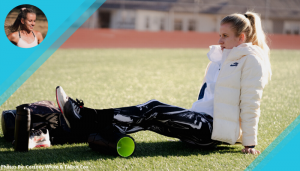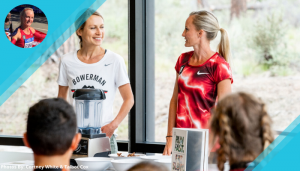Recover Like: Olympian Colleen Quigley
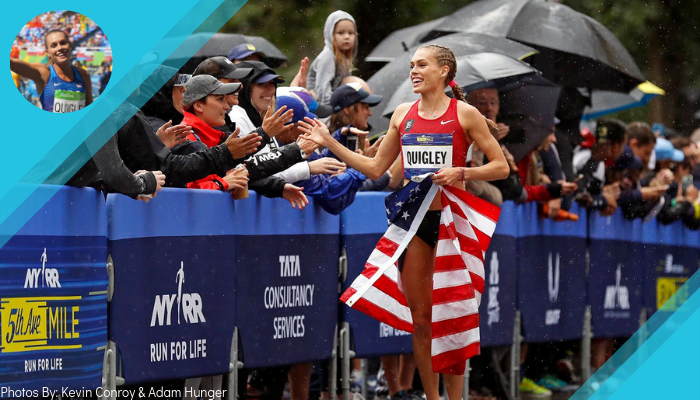
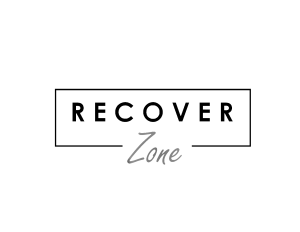
By: Recover-Zone Team
Our amazing team consist of a wide variety of writers, from novice athletes, to serious competitors. Competing in an array of fitness challenges.
Having the expectations of the United States resting on your shoulders is a big load! Colleen Quigley takes it in stride. Competing in the Olympics and on top of that winning a National Title, the future is bright for the American Stud. A rise to the top could be waiting for Colleen, something she is defiantly not foreign too. Having the record of being a nine-time NCAA All American, Colleen’s eyes are on the future and she is ready for more.
In an industry dominated by health fads, superfoods, and groundbreaking diets, Colleen Quigley looks another way. Finding inspiration from the childhood example of her parents, Colleen shares her insight on recovery nutrition and how she fuels her world-class training. However, knowing recovery is so much more than just the kitchen Colleen also advocates by her high tech recovery tools and their low tech counterparts.
What does a typical day of training and recovery look like for you?
Normally, my training partners and I do our hard workout in the morning, around 9:30 or 10:00. That might be a track workout or maybe an hour run with weights. My biggest recovery zone is right after that, between my morning run and what I do in the afternoon. Sometimes I run again and other times I swim. As soon as I get done with that morning workout, it’s switching over from working to recovering.
The biggest thing for me right after I get done is my nutrition. For example, today we ran an hour, did strides at the track, (Some quicker paced hundred meter runs.) and then my steeplechase team-mate and I did some hurdles. Those took 20 minutes and after we went to the gym. I knew that I ate breakfast at 7:30 and I had already been working out for almost two hours. If I was going to work out for another hour in the gym, I needed some fuel. That is why I got a Picky Bar, which is one of my go-to brands for a quick hit of calories. They are a company owned by a runner. I find those are just really great, simple, products. You can read all of the ingredients on the package and there is no crazy stuff that they put in there product that you do not know what you are putting in your body. It is all whole food ingredients. Sometimes I make my own, but I today I did not have any on hand instead. Once I was done, I had a smoothie right after. I grabbed one because I would not get home until 1:00. I could not go from 7:30 in the morning until 1:00-1:30 by the time I actually ate lunch, that is too late. I am always packing snacks and figuring out ways to fuel myself throughout the morning’s session.
When I got home I had lunch, hung out, and did some work. I am on my laptop today, trying to read through some emails. I take a nap every other day. Then, afterward around 4:00 I will head back down the mountain, to the gym again. I am going to do a swim and I might have some bananas and peanut butter if I’m hungry. Following the swim, I will make dinner and eat with my teammates. A lot of fuel throughout the day and plenty of snacking. Plenty of little hits to keep me going. I do this so I do not get too lulled in my energy throughout the day.
Do you do add to all of your eating with any supplements?
I typically do protein powder in my morning oatmeal. If I make my own smoothie, or if I get to the gym and they offer good protein powder, then I’ll put some of that in my smoothie as well. At least once a day I will do a little protein powder and maybe not even a whole scoop. I am not trying to go crazy with protein. I do not feel I need 40 grams of protein at a time. Just enough to get a little extra in. I also look for one that does not have added sugar and is a whey protein, either chocolate or vanilla. I keep it super simple. I do not want to have a bunch of additives in my protein.
How has your past influence your nutritional choices?
I think my whole philosophy on nutrition actually started when I was growing up. Luckily my parents had a really good base understanding of food and nutrition, and how to eat properly for general health. We had a garden and ate whole foods. Not from the store called Whole Foods, but whole foods that we had to chop, bake, broil, and cook. They’re not: “put in the oven, bake for 20 minutes, or pop in the microwave and dinner’s ready.” That’s not the type of food I grew up eating.
At the time, I did not realize how lucky I was to have that instilled in me. Now that I am able to cook for myself I really have a feeling for, “Oh wow. I have a good base understanding of how to fuel myself in a way that is good for me as an elite athlete.” The only difference from before is that as an elite athlete, I eat more of the same foods. It takes more to fuel me. I’m not necessarily eating much differently than my parents do as normal humans. I just need more quantity of food because I am constantly hungry and burning a lot of calories.
I try and always tell people it is not some kind of superfood situation where you have to eat pizza every day. It is about variety, eating what is in season and shopping around the edges of the grocery store where all the fresh foods are. This, as well as actually taking the time to prepare the food and make meals that are not ‘take and bake’ options. If you can make a meal in three minutes from unwrapping it and putting in a microwave, chances are that is not going to be the best fuel for your body. It takes a little more effort, but I enjoy cooking too. For me, I like the process of cooking and preparing food. I think it tastes better that way. You learn more about what you are putting in your body if you take the time to prepare it.
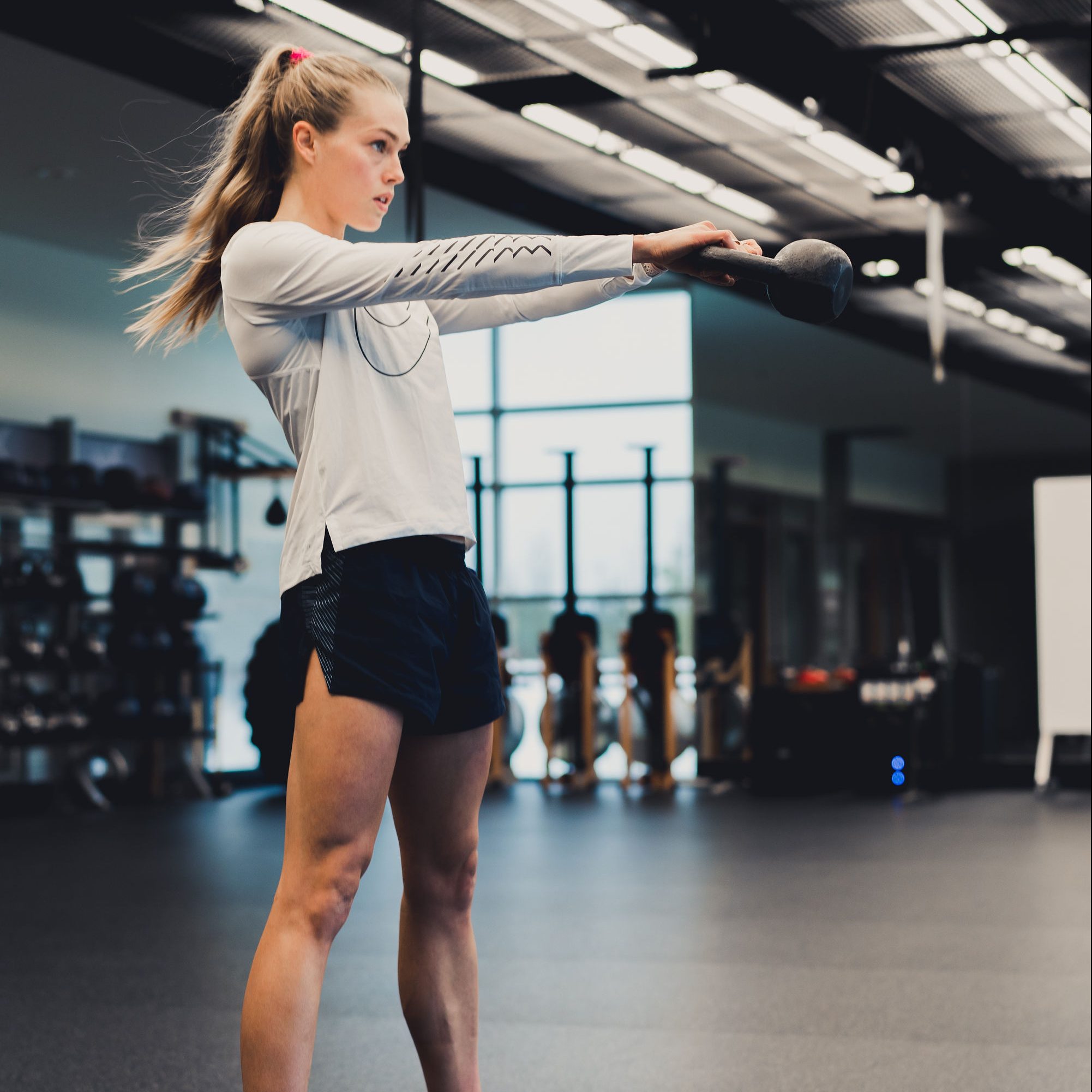
"As soon as I get done with my morning workout, it's switching over from working to recovering."
Does cooking serve as a form of mental recovery for you?
I do enjoy cooking a lot. I know not everyone has that relationship with cooking. However, for me, that is part of the process, especially when I’m up here training in the mountains with my teammates. We share a kitchen together and try to plan meals. Usually, we will pick one night to make dinner, then the following night we will flip-flop. We work together as a team and try to share the load of the work. Sometimes you will eat something you do not normally make, but it is your team-mates go-to. Sharing recipes make it all the more fun!
Do you count calories or macros?
I do not count calories at all. I know that I am burning calories just because of my hungry and this is how I calculate what I need. The main reason for this is that all the food that I eat, chop, and salute all come from whole food ingredients where there is no label that tells you how many calories are in it, like an apple. It’s a little bit different. It would be tons of work to figure out how many calories I ate in a day. Honestly, I do not really care. I feel the best indicator is hunger. If I am eating the right foods, I eat until I’m full. That is enough calories for me. I eat the right kinds of foods and then I let my body decide how much I need.
It is something that you learn. I think younger athletes have to calculate it because they do not know what their body needs yet. They might not be as in tune to listening to what their bodies are telling them. Instead, they are trying to plug in a formula or copy what other people are doing to see if that works for them. From time and months of experience over the years, I have been able to figure out what works for me. That way I do not have to look at anyone else’s formula anymore and can listen to my body.
What is your favorite recovery recipe?
One of my favorite go-to recipes is what I grew up eating with my family. My dad coached cross country and track at the high school level, and my mom was working in most evenings during the week. When my dad and I would arrive home from practice it would be 6:00 already. He would need to whip up dinner for my brother and sister and I. Instead of macaroni and cheese, the go-to for many families, my dad would make a quick meal that was a crowd pleaser for three hungry young athletes. It was his yogurt pasta recipe. It is called yogurt fettuccine, and you can find it in the dinner section of my websites recipes. It only has four ingredients. I love getting people’s pictures of: “I tried your yogurt pasta. It was awesome, my whole family loved it!” It is super-hardy and very satisfying. After a long day of training when you are hungry and want something delicious, creamy, and rich this recipe is great. You can get your fix for a creamy, delicious hardy pasta, without heavy cream. Using plain yogurt and parmesan cheese allows for the creamy sauce taste without making you feel bad about using heavy cream.
How does your elite training team the Bowerman Babes go about recovery?
Our team does a lot of the same types of things. I would not say that we necessarily coordinate or organize recovery, but we end up doing similar methods. Most of us have NormaTec compression units that sponsor USA Track & Field. I always bring those to altitude campus with me for in the evenings when I am in bed where I can sit in those for 30 minutes. I know many of my teammates do that as well. We do not do it together, but we have a lot of the same habits.
The Roll Recovery products are another set of products that we all use regularly. The R8 is for the legs and the R3 is for the foot. This company was also created by a runner. They have a few different types of products now. One is a foot roller, that you place under your foot. The other looks like roller blade wheels. It is two sets of three wheels and they are connected with springs. You pull them apart on either side of your legs and massage. It is a ‘hurts so good’ type of thing.
What is your favorite recovery technique?
Other than the methods I already mentioned I also use a foam roller. Another simple option is a lacrosse ball or a golf ball for under the feet. Super cheap basic things that you can get for just a few bucks. It doesn’t have to be the fancy stuff.
What is the most effective recovery method you would recommend to our readers?
Simple things in general. The rolling balls are cheap but also a stretch rope is super cheap. When I was in college I went to the hardware store and got five feet of rope for five dollars. That five bucks was a make-shift stretch rope. Not everything has to be high-end runners-specific products. Whatever does the trick.
People get caught up in the latest technology which, I am defiantly guilty of. I have one of those Hypervolt massage guns. It is expensive but I would say that it is worth it. The Hypervolt helps you give yourself a great massage. The device is expensive, but if you compare it to paying for a massage therapist over time, might justify it. A paid massage could be 60 to 100 dollars for an hour. Instead of paying for six or eight massages you could buy the Hypervolt.
Do you use swimming for recovery?
Swimming is awesome as an active recovery. A lot of the afternoons here, my teammates will go out for a second run around 4:00. I have found that my body can only run two-a-days a few times a week before I become too fatigued. I started swimming when I got injured. Now that I am healthy, I still have not completely stepped away from it. I have reduced my time in the pool since the injury but, instead of a second run two or three days a week, I head to the pool. I am going to swim for about 40 or 45 minutes instead of a run this afternoon. I like swimming because I am still breathing hard especially at altitude. The training is definitely a challenge, but I am not getting the impact and pounding on my legs that would come from running those 40 minutes. My legs really can tell the difference. I know that I have worked hard and burned calories because I am hungry after the workout. It helps get the junk out from the morning’s workout. The past three or four years, I have put swimming into my regimen of recovery and training. I run fewer miles than most of my teammates, but I try to make up for that effort with working in the pool.
Any last pieces of advice for our readers?
Sleep is another big one. I use a program called SleepRate. It is a monitor that you put under your mattress that connects to an app. You tell the app when you are going to bed and what you did that day. It tracks your sleep at night and tells you what percentage of the night you were in REM sleep, deep sleep, light sleep and how much you were awake. It is fun to get more information about how you slept because oftentimes I feel as though I woke up and I didn’t wake up at all. Other times I was awake 25 minutes and I don’t remember it. Obviously, sleep is super important. I sleep probably 9 hours a night, every night. A lot of my time.
How Colleen Recovers:
Want More Great Interviews...
What’s up fitness fam! You might have noticed links on our website for various products. We wanted to let you know that we do this to keep our website ads-free. Obviously, nobody likes the pesky clutter of ads so instead, we simply put links to related products so that you don’t have to go searching if you want to buy something related to the post you are reading. As you probably guessed, yes we do get a commission if you buy something through our link, but here is the great news, it does not cost you any more! That means you can buy things you already wanted, support our business for free, and not have to deal with annoying ads! It’s a win, win, win! (If you really want to help us out you can use our link whenever you shop Amazon by clicking here and bookmarking the page.) If you would like to read all the technical mumbo-jumbo behind our links you can click here.


